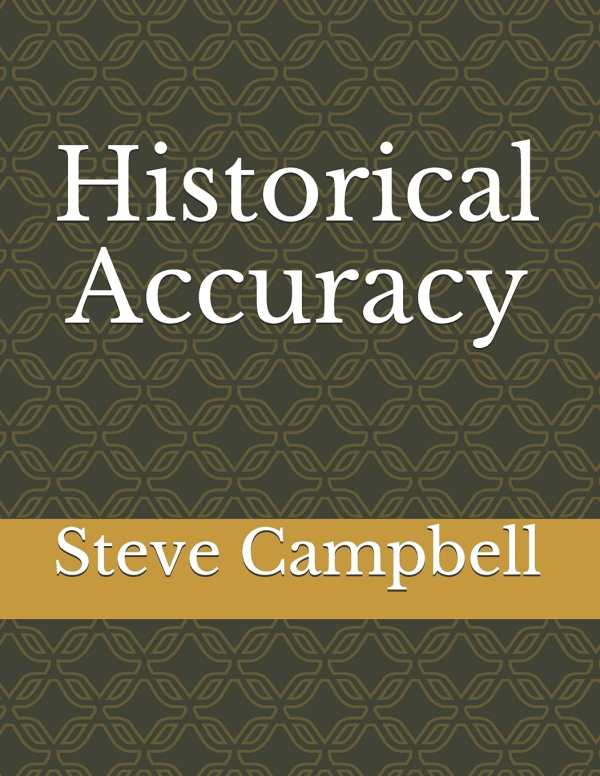Historical Accuracy
The informative and passionate textual survey Historical Accuracy reviews the veracity of biblical accounts.
Inquisitive and scholarly, Steve Campbell’s religious text Historical Accuracy is about the historical backgrounds of biblical tales.
Concerned with what historical knowledge and archeological findings can validate in the Bible, this is a fair-minded and explanatory text. It examines biblical stories that synthesized disparate events, that embellished the truth, or that set their events in different time periods, resulting in a complex picture of the historical foundations of the Bible. It seeks scientific explanations for biblical tales, too, as when it presents an earthquake as a possible explanation for the fall of Jericho’s city walls, and attributes carbon dioxide from a limnic eruption to the tenth plague of the exodus story.
Each chapter consists of a biblical story followed by a survey of research into its veracity. Contextualizations—as of ancient Egypt’s treatments of the dead, of messianic notions in Jewish eschatology, and of other contemporaneous belief systems—and literary commentary play into the book’s organized, objective take on biblical events and characters, from Jesus to pharaohs to Pontius Pilate; in the latter case, it examines information such as how many people the figure was credited with executing. The text does an able job of illustrating how religious concepts evolved over time, as well as of tracking similarities between disparate philosophies. Many chapters end with useful bulleted lists of takeaways, though the book’s later chapters become more theoretical and scattered about their interpretations.
In language that is direct, concise, and clear, the book also connects certain biblical passages to the work of ancient philosophers, including Heraclitus, Epictetus, and Socrates. Parallels between the stories of Jesus, Hermes, and the Roman emperor Vespasian are also noted, and Jesus’s words, as recorded in the gospels, are also connected to other historical figures. This is well-sourced work that draws on sources including Biblical Archeological Review, Plutarch’s Fall of the Roman Republic, and Ancient Egyptian Literature: An Anthology, though its nods to Wikipedia are less authoritative.
Unconstrained by allegiance to traditional takes on the Bible’s background, this book builds to a comforting conclusion that draws able parallels between the story of Jesus, the lives of the Roman emperors, and other historical precedents. Still, the conclusion recapitulates the work of earlier chapters at length; it is short on fresh developments.
Informative and passionate, the religious and historical survey Historical Accuracy reviews the veracity of biblical accounts.
Reviewed by
Joseph S. Pete
Disclosure: This article is not an endorsement, but a review. The publisher of this book provided free copies of the book and paid a small fee to have their book reviewed by a professional reviewer. Foreword Reviews and Clarion Reviews make no guarantee that the publisher will receive a positive review. Foreword Magazine, Inc. is disclosing this in accordance with the Federal Trade Commission’s 16 CFR, Part 255.

